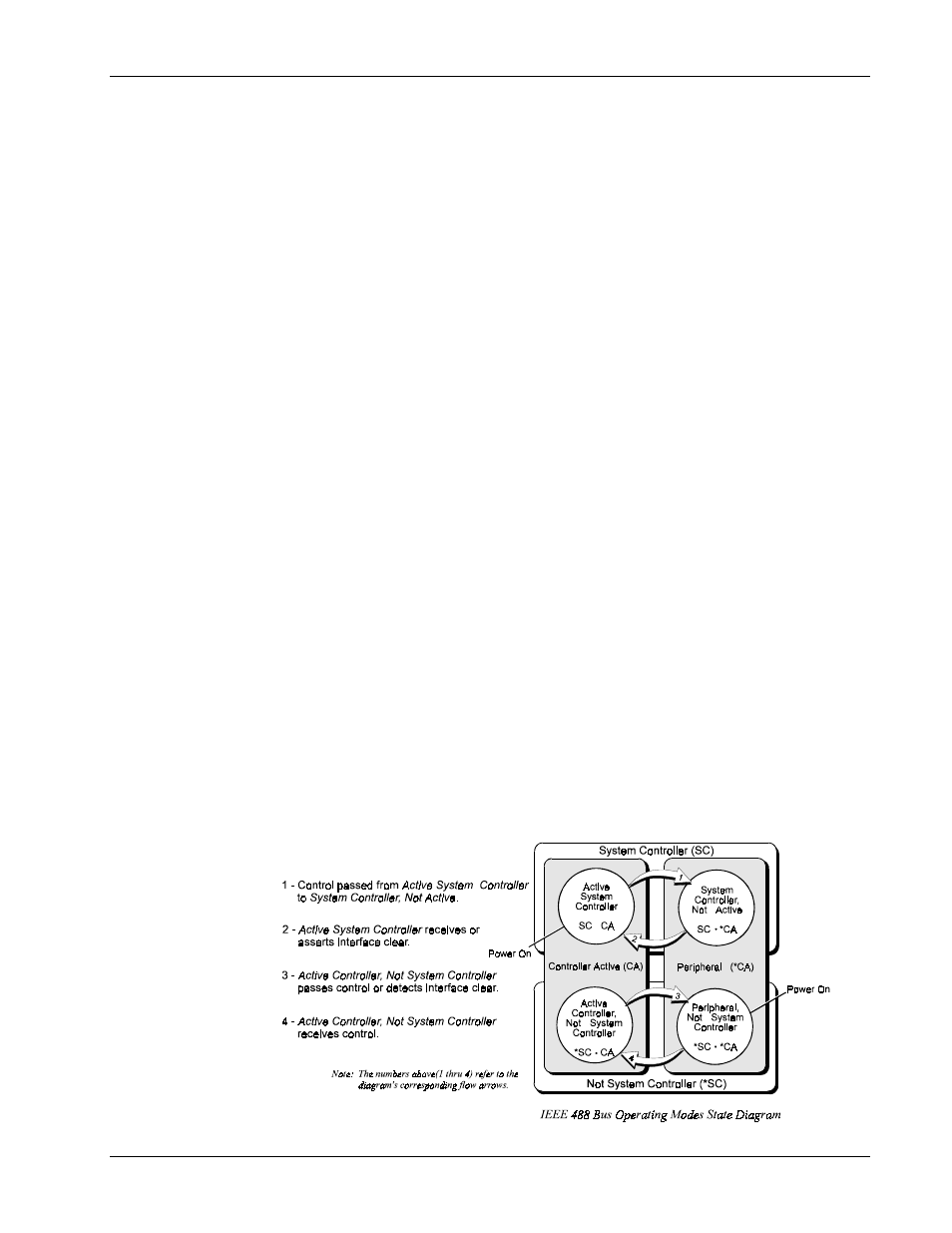Introduction, Operating mode transitions – Measurement Computing Personal488 rev.3.0 For DOS & Windows 3.Xi User Manual
Page 132

II. SOFTWARE GUIDES - 8. Driver488/DRV
8N. Operating Modes
Personal488 User’s Manual, Rev. 3.0
II-117
Introduction
There are four types of IEEE 488 bus devices: Active Controllers, Peripherals, Talk-Only devices, and
Listen-Always devices:
•
In simple systems, Talk-Only and Listen-Always devices are usually used together, such as a Talk-
Only digitizer sending results to a Listen-Always plotter. In these systems, no Controller is needed
because the Talker assumes it is the only Talker on the bus, and the Listener(s) assume they are all
supposed to receive all data sent over the bus. This is a simple and effective method of
transferring data from one device to another, but is not adequate for more complex systems where,
for example, one computer is controlling many different bus devices.
•
In more complex systems, the Active Controller sends commands to the various bus Peripherals,
telling them what to do. The controller sends bus commands such as:
Unlisten
,
Listen
Address Group
,
Untalk
, and
Talk Address Group
to specify which device(s) send data, and
which receive it.
When an IEEE 488 bus system is first turned on, some device must be the Active Controller. This
device is the System Controller and always keeps some control of the bus. In particular, the System
Controller controls the Interface Clear (
IFC
) and Remote Enable (
REN
) bus management lines. By
asserting Interface Clear, the System Controller forces all other bus devices to stop their bus operations,
and regains control as the Active Controller.
Operating Mode Transitions
The System Controller is initially the Active Controller. It can, if desired, Pass Control to another
device and thereby make that device the Active Controller. Notice that the System Controller remains
the System Controller even when it is not the Active Controller. Of course, the device to which control
is passed must be capable of taking the role of Active Controller. It would make no sense to try to pass
control to a printer. Control should only be passed to other computers that are capable, and ready, to
become the Active Controller. Note further that there must be exactly one System Controller on the
IEEE 488 bus. All other potential controllers must be configured as Peripherals when they power up.
The state diagram which follows, shows the relationships between the various operating modes. The
top half of the state diagram shows the two operating states of a System Controller. At power on, it is
the active controller. It directs the bus transfers by sending the bus commands mentioned previously.
It also has control of the Interface Clear and Remote Enable bus lines. The System Controller can
pulse Interface Clear to reset all of the other bus devices.
Furthermore, the System Controller can pass control to some other bus device and thereby become a
Peripheral to the new Active Controller. If the System Controller receives control from the new Active
Controller, then it once again becomes the Active Controller. The System Controller can also force the
Active Controller to relinquish control by asserting the Interface Clear signal.
